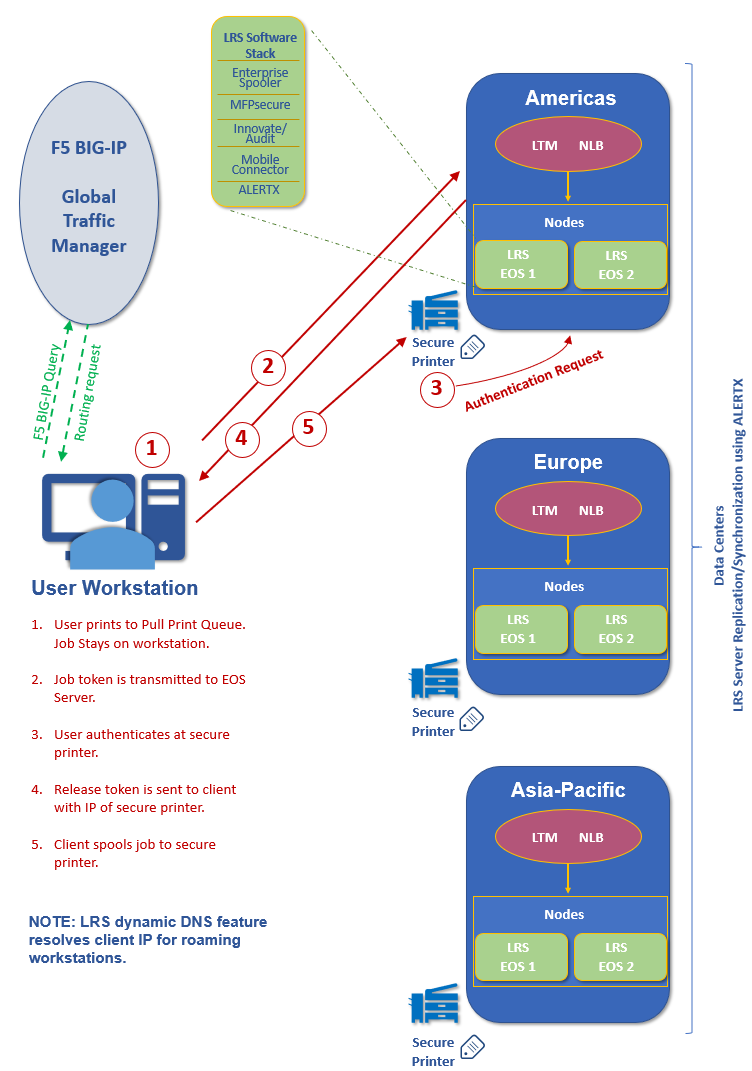There are two measures of an enterprise software solution: how easy it is to implement in a basic scenario, and how easily it can adapt to meet the needs of a more advanced one.
Recently, our implementation teams deployed the LRS solution at a global energy services company with heightened security requirements and the need to support traveling employees throughout the world. In designing the environment, we were able to leverage global server load balancing (GSLB) to configure a single point of access for print traffic. This enables the system to manage printing from the closest data center based on geolocation of the user’s workstation as they roam from place to place.
There is nothing uncommon about this architecture design… it lets users access a single URL (i.e., print.company.com) to connect to the corporate Enterprise Output Server (EOS). The client print request is routed by the Global Traffic Manager (GTM) to the closest data center. In this case, there were three data centers called “Americas,” “Europe,” and “Asia-Pacific.” Within each of the data centers there was a Local Traffic Manager (LTM) with an active/passive, two-node EOS configuration. The picture below depicts the environment:

Because users were constantly on the move, we used the LRS MFPsecure component to enable secure pull-printing. We also implemented our Direct Secure Release capability to hold the user’s print job on the client and spool it directly to a secure printer when the user authenticates at the device. These measures not only ensured that documents were sent to the correct location, but also eliminated spooling across the WAN.
By implementing the LRS AlertX monitoring and synchronization component, we were able to keep the EOS environment constantly updated and highly available. This enables the customer to manage the enterprise print infrastructure with very limited support resources.
This same design works well for regional organizations with multiple data centers used for backup and DR sites by allowing the GSLB to route print traffic to the active data center.
For more information, please contact your LRS Systems Engineering team and they will help you to design a highly available, secure, optimized print infrastructure for your organization.